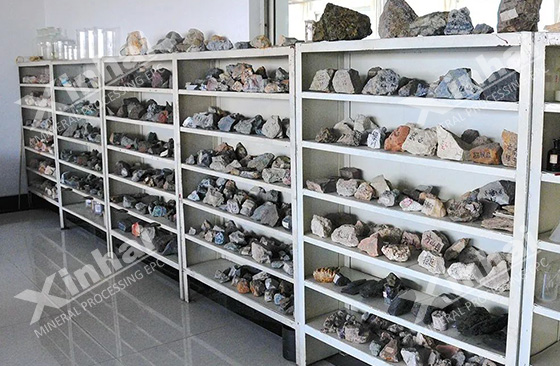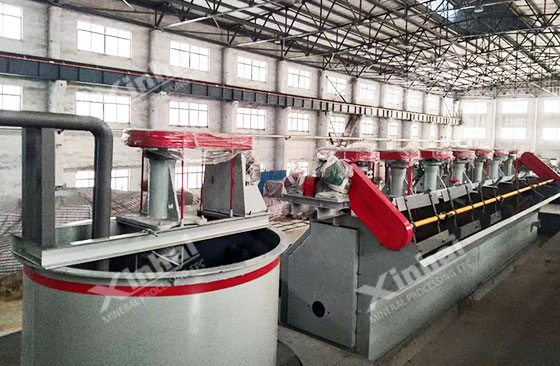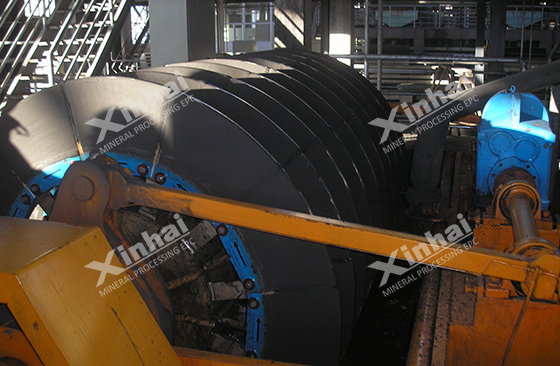
Iron ore resources are important raw materials for smelting steel. With the rapid development of industry, the reserves of rich iron ore and easy-to-select poor iron ore are becoming increasingly exhausted. Weakly magnetic iron ore has become a mineral raw material that must be developed and utilized in the development of the steel industry. The development and utilization of weakly magnetic iron ore requires mineral processing. Different separation processes will be selected according to the different particle sizes and types of mineral embedding. Weakly magnetic iron ore is divided into hematite ore, siderite ore, limonite ore, and specularite ore according to the type of minerals. And according to the coarseness of the embedding particle size, weakly magnetic ore can be divided into coarse-grained type, medium-grained embedding type, and fine-grained, micro-fine-grained embedding type. The following will introduce you to these three types of weakly magnetic iron ore and weakly magnetic iron ore beneficiation technology.
When the particle size of the useful minerals is above 2mm, this type of weakly magnetic iron ore belongs to the coarse-grained type. This type of ore contains more siderite and limonite, so the iron content in the ore is higher, but limonite often contains a certain amount of clay. Therefore, for the treatment of coarse-grained weakly magnetic iron ore, it is necessary to adopt a washing process. This type of iron ore beneficiation is also relatively simple. Generally, gravity separation, dry or wet strong magnetic separation methods are selected. The equipment used for gravity separation includes heavy medium ore separation equipment, jig and spiral ore separation machine.

When the particle size of the useful minerals in the weakly magnetic iron ore is 2mm-0.3mm, it belongs to the medium-grained type, and this type of ore is relatively easy to select. The main treatment methods for this type of ore include gravity separation, strong magnetic separation, gravity separation + electric separation, roasting magnetic separation and other combined beneficiation methods. The most commonly used beneficiation methods in beneficiation plants are gravity separation and strong magnetic separation technology.
When the dissociation particle size of iron minerals is 0.2mm-0.043mm, this type of ore belongs to the fine-grained type. Iron ore with a dissociation particle size of iron minerals below 0.043mm belongs to the micro-fine-grained type iron ore. This type of ore is mostly produced in sedimentary iron ore deposits.

Generally speaking, weakly magnetic iron ore is a kind of iron ore that is difficult to be separated. The weakly magnetic iron ore beneficiation methods are often roasting-magnetic separation, flotation, gravity separation, strong magnetic separation or combined mineral processing methods.
1. Roasting-magnetic separation method: This is a mature method for treating weakly magnetic iron ore, but this method has high infrastructure investment and production costs, so it is rarely used in mineral processing plants.

2. Flotation method: There are two flotation methods for weakly magnetic iron ore: positive flotation and reverse flotation. The positive flotation process has the advantages of a single process, a wide source of reagents and a low price, but the primary and secondary ore slimes in the flotation process will seriously affect the indicators of the flotation technology, while increasing the consumption of reagents, and making it difficult to filter and dehydrate the concentrate. Therefore, the mineral processing plant uses cationic reverse flotation technology and selective flocculation reverse flotation technology to treat fine-grained weakly magnetic iron ore. Reverse flotation technology can overcome some of the shortcomings of positive flotation and improve the separation indicators of iron ore.
3. Strong magnetic separation: This method has the advantages of simple process, less pollution, easy dehydration and filtration of concentrate, and high efficiency of desludging and tailing. However, it is difficult to effectively recover -20mm iron ore by strong magnetic separation. Therefore, a single strong magnetic separation technology is rarely used to treat weak magnetic iron ore. When a combined process is used, the strong magnetic separation process is used to treat desludging and tailing and stabilize the grade of the next process.
4. Combined process: According to the different embedded particle size characteristics of weak magnetic iron ore, the combined process can give full play to the advantages of magnetic separation, flotation, and gravity separation, and has the characteristics of efficient selection.

In summary, for weak magnetic iron ores of different types and embedded particle sizes, corresponding beneficiation processes need to be adopted. Although traditional technologies such as roasting-magnetic separation and strong magnetic separation still have their application value, the combined process combining multiple beneficiation methods shows higher beneficiation efficiency and flexibility. By rationally selecting and combining various beneficiation technologies, not only can the utilization rate of iron ore be improved, but also the production cost can be effectively reduced, providing strong support for the sustainable development of the steel industry. In the future, with the continuous advancement of science and technology, weakly magnetic iron ore beneficiation technology will continue to innovate and improve, making greater contributions to the efficient utilization of resources and environmental protection.
To find out more about our products and solutions, please fill out the form below and one of our experts will get back to you shortly.